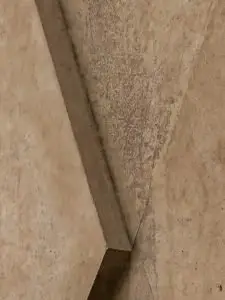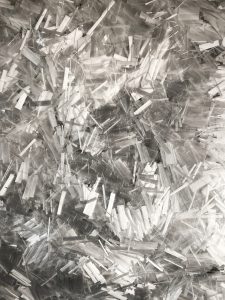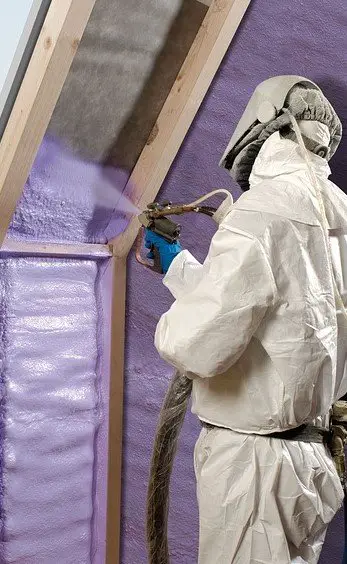Knowing how do RV temperatures get hot or cold inside is a pre-requisite to learning how to keep your RV warm or cool no matter what the weather is. To help you learn everything you need to know about these, we’ll be discussing science here but of course in an interesting way. I promise you won’t be bored!
BLOG CONTENTS
The main reason why do RV temperature get hot or cold inside
What are RV walls typically made of?
Practical tips on how to keep your RV temperatures warm or cool
The main reason why do RV temperatures get hot or cold inside
Naturally, the outside environment affects RV temperatures the most. Whatever the temperature is outside, so does it transcend inside the RV. So here’s the main reason:
| Fun Fact: | The law of heat transfer states that heat always travels from hot to cold, not the other way around. So, to say that “cold air is getting out” whenever you open your fridge is a misnomer. |
Across any surface, heat transfers from the hotter side to the colder side to make it balanced. That’s the natural order of things. I’ll be elaborating on this further as we go through this section. But what keeps an RV temperatures cool despite the hot weather? Or what keeps an RV warm despite the cold weather?
The secret lies in your RV’s walls – specifically, the insulation embedded in your sidewalls, roof and even floor. Insulators are vapour barriers that stand in the way between your RV and the outside temperature.
What do you mean by ‘vapour’ and why should it be blocked?
Vapour is not limited to ‘water in the form of hot gas’. Rather, it extends to ‘water in the form of gas all temperatures’. To help you understand better, remember that
Air carries vapour.
Having that said, there are two cases we must consider:
- If a surface is cold and the air is warmer, then the air that touches that surface will have its vapour condensed along that surface. That is why you see droplets of water in your bottle of soft drink a couple of minutes after taking it out of the fridge.
- On the other hand, if a surface is hot and the air is colder, that surface will continue to expel heat. This heat will be “scooped up” by the air that touches that surface, that is why you can still feel the warmth of your cup of coffee even without actually touching the cup.
Both of the above cases continue to happen until the difference in temperature between the two sides of the surface becomes balanced. Simply put, when one side is hotter than the other – heat naturally finds its way to travel to the colder side for both sides to be balanced. Now that is the aim of insulators – it is to prevent that balance from happening.
Following through with the main reason, it is but essential to pick the right materials for your RV’s insulation and walls.
What are RV walls typically made of?
Similar to sandwiches, RV walls have three main layers – the inner wall, insulation and outer wall – all framed together via aluminium square bars.
Each layer is made of different materials. Let us go through each one of them:
1. Inner Wall
This layer is commonly made of plywood, medium-density fibreboard (MDF) or vinyl.
-
- Plywood is comprised of thin sheets of wood (i.e. veneers) piled together in alternate 90°. In terms of quality, it must be compliant with the Australian Standard AS/NZS 2269.0.
- MDF is practically a mixture of hardwood and softwood fibres bonded together using wax or resin under high pressure and temperature. Similar to plywood, MDF has a standard to conform with and that is AS/NZS1859.2.
- Meanwhile, vinyl is a type of durable plastic. As it is plastic, vinyl can be so easily designed and formed to copy the look of a wide variety of materials – for example, brick stones and wood.
|
Plywood |

MDF |
Vinyl |
| MATERIAL | PROS | CONS |
| Plywood |
|
|
| MDF |
|
|
| Vinyl |
|
|
2. Insulation
Insulators play the most integral part in preventing RV temperatures from getting hot or cold inside. I have already introduced the concept of insulation above. So technically speaking, a good insulator must:
-
- Be lightweight – You know pretty well how weight plays an important factor in RVs
- Have a low thermal conductivity – Thermal conductivity is the ability of a material to let heat travel through its body. Hence, the lower the thermal conductivity, the more capable the material is at stopping heat from passing through its body.
- Be durable – Just as other construction materials are required to be
- Be resistant to moisture and fire
With those factors taken into consideration, some insulation materials used in RVs include the following:
a. Fibreglass
As its name implies, fibreglass is literally fibres of glass. I bet you didn’t expect that glass can be made into fibres. Well, it is possible, only that you’ll need an extreme amount of heat. Fibreglass manufacturers make them by melting the typical glass that you know at >1000°C and then applying sufficient pressure to shape them into tiny fibres.

What makes it an effective insulator?
Similar to your typical glass, fibreglass is naturally resistant to moisture and fire. Meaning, it does not need additives to make itself fire resistant – unlike in rigid and spray foams where:
-
-
-
- Rigid foam needs a flame retardant integrated into it during manufacture
- Spray foam needs an ‘external’ additive which will make it flame retardant
-
-
If you notice in converted buses, most of its surfaces are made of fibreglass.
b. Rigid foam
People know this material just as “rigid foam”, but what is it exactly? The most common materials that make up rigid foams are polyurethane and polyisocyanurate. This jargon might overwhelm you, but a clue here is that when you hear ‘poly’ as a prefix – that is almost always a type of plastic (a.k.a. polymer).
What makes it an effective insulator?
As it is rigid and a plastic, this foam offers no space for air and moisture to come in. That means moisture-carrying air can’t be entrapped and can’t cause leakage or heat expulsion, thus preventing RV temperatures from getting hot or cold inside. Furthermore, it does not degrade in the extreme Australian temperatures and it can be easily cut into the shape/s you want. In fact, rigid foam is the standard insulator applied in manufacturing plants – specifically, in storage tanks, cold room walls and pipes.
The challenge
You have to take exact measurements to ensure that your foam will fit snugly into your walls, not leaving any single cavity where air can enter and absorb moisture.

c. Spray foam
Understandably, the materials that make up rigid foam is closely similar to that of spray foam. However, the difference is that spray foam has more additives so that it can bring up its ability to be sprayed.
What makes it an effective insulator?
As its material is similar to rigid foam, spray foam more or less offers the same benefits. However, unlike in rigid foams where you have to cut and shape, spray foam can seal even the tiniest cavity.
The challenge
Although it seems easy to apply because all you have to do is spray, the truth is it’s not easy at all. It is so complicated and critical that there are professionals for this job.
Improper application of spray foam will turn its benefit into a bigger catastrophe. One example is a permanent odour that may come with “off-gassing” – that is, the release of toxic fumes.
Since this foam type is a spray, gaseous chemicals are inevitably released during application. Evidence of this is odour. However, the time how long such odour lingers depends on the skill of the person applying the foam.
d. Aerogel
Practically composed of just air (>99%) and a bit of silica and solvent, no wonder Aerogel is reported to be the elite of the elites when it comes to insulation capabilities. That is because not only is it an extremely lightweight material, but it is also both durable and flexible. But here’s the jackpot benefit – Aerogels Australia claims that:
Aerogel has 2 to 4 times the thermal resistance of other existing insulation materials used in vehicles.
Not long ago, the world watched how NASA successfully launched the Mars rover to Mars and back. Guess what? Mars rover uses aerogel as its insulator! That is how excellent it is.
Given those outstanding properties, you can only expect Aerogel to be costly – and indeed it is. Buy Aerogel presents a 10mm thick Spaceloft (the aerogel variant suitable for RVs), cut to the largest possible size (6m x 1.5m), to be worth approximately AUD 155 per square metre! And that price already includes a discount for bulk purchases. Therefore, budget (and not product performance) is really your main dilemma when deciding whether or not to use aerogel.
3. Outer Wall
Being the surface that’s not only seen on the outside but more importantly the one that interacts with the outside temperature first – outer walls must be of a slightly different standard to that of your inner walls. It is a big plus if the outer wall material exhibits some insulating properties, helping the actual insulator in preventing RVs from getting hot or cold inside. So here are some primary options:
a. Aluminum
People usually know only stainless steel as a corrosion-resistant construction material. However, it is pretty much common practice to use aluminium in RV frames, walls and other parts due to its following properties:
-
-
-
- Lightweight – its density is only 36% that of stainless steel
- Corrosion-resistant – at least in the case of non-ferrous aluminium (corrosion can be mitigated in ferrous aluminium too via the application of the right paint)
- Fire-resistant – There’s been common knowledge that aluminium is highly combustible. It’s true, but only in part. The truth is that aluminium may or may not be combustible depending on its physical form (e.g. solid bar, powder, etc.) and chemical form (e.g. pure, alloy). What’s important is that the non-combustible type is used in RVs.
- Strong – aluminium can absorb twice as much impact force as regular steel
- Flexible – this property comes in handy during a collision because aluminium can bounce back after absorbing impact forces
- Eco-friendly – Aluminum saves 95% in energy when recycled, making it a highly recyclable material
-
-
One downside is that aluminium has high thermal conductivity, but this can be easily offset by choosing a good insulator.
b. Composites
Composite panels are made of a mixture of different materials such as plastic, wood, glass and many others. While it is good that by mixing different materials a resultant material of superior quality is produced, be wary because it might be a double-edged sword. What I mean is that a material’s good property may be significantly reduced when mixed with a different material.
An example of this is the Aluminium Composite Panels (ACP) which contributed to the widespread of the Docklands fire in 2014. The Age reports that although the building’s ACP was proven to be safe against ignitability, the spread of flame, heat and smoke, there were no compliance tests conducted for combustibility when the building was commissioned.
Currently, the use of ACP is explicitly banned in New South Wales, Queensland, and Victoria. However, that ban is for certain types of buildings only, and with a few exceptions.
c. Fibreglass
Although already introduced as a suitable insulation material in keeping RVs from getting hot or cold inside, fibreglass has a different form that makes it fit not as an RV outer wall actually, but as a coating of the RV’s outer wall.
Practical tips on how to keep your RV temperatures warm or cool
As I end this blog, answering the questions, “How do RV temperatures get hot or cold inside” and “How to keep your RV temperatures warm or cool” – let me share with you some practical tips.
1. Choose the right insulators
What else could go wrong if you do it right from the get-go? When purchasing or renting an RV, it pays to check the RV’s insulation material. I believe the insulators I’ve previously introduced will help you garner an idea of what to look for and what to avoid.
2. Insulate your RV sidewalls, roof and flooring differently
Yes, that’s possible. Insulators come in different kinds – some with superior moisture resistance; while others with superior fire resistance. So it is good to make use of their different advantages by placing them where they are most needed.
3. Do not over-install aftermarket items without considering vapour gaps
Having more is not always better, and having the wrong specifications is definitely worse. As much as it has been the habit of RVers to install aftermarket items to customise their RVs, doing it right makes all the difference.
Some RVers tend to overdo it by installing the nicest fixtures and appliances (especially the wall-mounted ones), not knowing that it may affect the RV’s temperature regulation or it may damage the RV’s existing insulation.
You see, when vapour gaps are created within the layers of your RV walls, the tendency is that any vapour trapped inside will condense when the outside temperature gets cold. Result? Leakage from the walls and possibly the growth of moulds.
On the other hand, when the outside temperature gets hot and there is vapour trapped inside your walls, then that vapour absorbs heat from the outside and the interior of your RV becomes extra hotter than it’s expected to be.
4. Install dual pane windows
If walls can be insulated, why not windows too? Dual pane windows are not only excellent thermal insulators but also noise insulators. However, replacing your motorhome window with a caravan window is a different matter. There are safety and good practice standards to consider.
5. Be diligent on your maintenance checks
RV walls (insulators, in particular) must be regularly checked on too. As mentioned earlier, each type of insulator has its own life expectancy. While some naturally wear out after 2 or 3 years, others longer. Nonetheless, you never know in case an unexpected external factor caused your insulator to wear out earlier than expected – that is why maintenance checks are a must.
6. Keep your RV sealed
Take a look at your RV’s corners and side edges if there are any gaps present. Seal those gaps to maximise your RV’s insulation abilities.
7. Do tasks in accordance with the weather temperature
A particular example of this is cooking. You won’t want to cook inside your RV in the midst of the Australian heat. Else, you’ll be the one getting cooked!
8. Consider buying portables
In times of power shortage, consider using portable devices which can aid you in keeping your RV from getting hot or cold inside without having to use as much electricity as your typical appliances do. Evaporative coolers, for instance, mainly relies on water to cool your RV interior.


